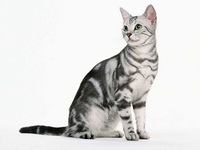Castration, sterilization, care after surgery
 First, let’s look at the terminology.
First, let’s look at the terminology.
Castration is the removal of reproductive organs. At males at the same time testicles (testicles) are removed and at females removal of a uterus and ovaries is carried out. The purpose of a planned operation in animals is the correction of sexual behavior and the elimination of the ability to reproduce offspring. Sterilization is a procedure aimed solely at eliminating or temporarily inhibiting the reproductive function of animals; sexual behavior and all secondary sexual characteristics remain unchanged. In the case of surgery, manipulations are carried out that are not related to the removal of the testicles and ovaries.
Thus, the sterilization of animals is impractical because it does not meet the task – it does not change sexual behavior and does not eliminate other unpleasant sexual characteristics (the urine of males retains a strong odor). In most cases (99%), veterinarians resort to castration of animals: castration of females and castration of males.
So, it will be about castration. Today, there is little doubt that castration is a blessing for the health of cats and cats. It is proved that the absence of the sex glands has a positive effect on the stability of the psyche and hormonal balance in the body of animals. People tend to try on their pets life and the perception of many of its moments. But the animal is not a man. It will never experience social experiences associated with the absence of this or that organ – it will simply use the fact that there is and enjoy life without hormonal surges that are detrimental to the body, often leading to cat fights and prolonged mental anxiety in cats. The elimination of unappropriated organs prevents the development of a number of diseases and neoplasms of the reproductive system: the testes, prostate, ovaries, and uterus. All currently available data on the harm of castration for cats and cats do not have sufficient evidence and are contradictory.
Castration of cats is a fairly simple surgical procedure that is performed under general anesthesia. To prevent injury to wounds when they are licked by animals, for 5–7 days, cats are recommended to wear protective postoperative collars. Healing and complete recovery of the animal usually takes 1–2 weeks. The procedure is so simple that, in the absence of anesthetic contraindications, it is quite often and successfully performed at home.
Castration of cats is associated with the surgeon’s penetration into the abdominal cavity in order to remove the uterus and ovaries. Such penetration, or more correctly called “surgical access”, can be done in two ways: midline laparotomy — the incision is made just below the navel and lateral laparotomy — the incision is made from the side. Endoscopic castration of the cat is also possible. In this case, depending on the chosen method, from one to three small incisions are made on the stomach, through which a miniature camera and manipulators are inserted to remove the uterus with the ovaries. And although the more modern method is laparoscopic castration, it is impossible to say with certainty which technique is better and less traumatic. A lot in this situation depends on the experience of the surgeon. Postoperative rehabilitation is a bit more complicated. A cat is recommended to wear a postoperative blanket mainly as a means of preventing loosening of stitches. The recovery period does not usually take more than 14 days.
Often, but not always, after castration, animals become calmer, move less and eat more. These factors can lead to a set of excess body fat. Also, according to some data, castrated animals are more susceptible to urolithiasis. For the prevention of a set of excess fat mass and urolithiasis at the end of the rehabilitation period, it is recommended to transfer your pet to specialized food for neutered cats and cats. An excellent example of such nutrition is Purina® PRO PLAN® Sterilised® feed, designed with all the metabolic features of castrated animals into account. Its special formula helps to maintain an optimal level of urine acidity, which makes it possible to successfully prevent the formation of urolithiasis, and a reduced level of fat, along with an increased level of protein, will reduce the risk of obesity in an animal.

